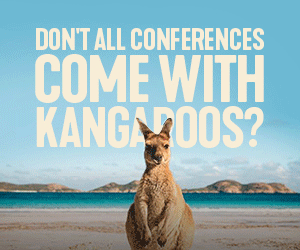Making the most of your most valuable resources

In a recent survey of nearly 1,000 association leaders, the most frequently given answer to the question “What is the biggest challenge to growing your organisation this coming year?” was lack of resources. When they say “lack of resources” they’re probably thinking about not having enough staff, or not having enough money. But, if used effectively, the single biggest resource most associations have is their members. That’s the resource that needs to be maximized.
Every association, professional society, Chamber of Commerce, or other membership – based organisation works diligently to get more their members involved in the work of the organisation. As technology and time have worked to become the biggest challenges to getting members to step forward and volunteer in their organisations, more and more of the work of these groups is being done by the staff. This has created an endless cycle of overworked staff and unengaged members. The job of the organisation staff is not to sit around and complain about lack of resources, the job is to make the most of those resources – those human resources – as is possible.
Here are three things associations can do, even in a world of time-challenged volunteers, to build their leadership core and create some truly energized ambassadors for their organisation.
- Try to break down the bigger jobs into smaller tasks
I truly believe that most members would like to help their organisation in some way, but they just can’t see how they can do that with all the other things they have going on in their lives. So, organisations need to create situations where members can give whatever time they have available and still feel as though they are accomplishing something. Organisations need to take a close look at the actual time commitment needed for each of their volunteer roles, and try to do some modern-day “job sharing”. Instead of asking a member to chair the Membership Committee, ask him/her to coordinate the reinstatement of five former members during the next year. That’s something that can be valuable to the organisation, can be done within a flexible timeframe, and is very focused.
Don’t let your organisation’s structure be a barrier to getting more members engaged and involved. Instead of trying to fit members in to an organisation chart, find out what talents and time they can commit, and then match that to the work that needs to be done.
- Be sure volunteers are given the tools for success
One of the reasons people are reluctant to volunteer in some organisations is because they don’t feel that they have enough experience to do the job correctly, and don’t want to be failures in their volunteer work. Don’t just provide a job description and assume the volunteer knows what to do.
Each organisation needs to have a well-defined and well – coordinated leadership development system. Many of the key jobs that volunteers fill in organisations require similar skills regarding the management of the volunteer committees, etc. However, some volunteer roles require some specialized training in order for the volunteer to be successful. This would include such things as positions as treasurer, Membership Chair, and/or Education Chair. Do some additional, specialized training for these volunteers
- Be sure volunteers get paid for their work
Obviously, if they are volunteers, they won’t be getting a paycheck for the work they put into your organisation. That doesn’t mean that you don’t have to pay them. For your volunteer leaders, the recognition they get becomes their paycheck.
Recognizing volunteers isn’t limited to giving awards at an annual banquet. Recognition is very simple – it means when a member gets involved in the leadership of your organisation in any way, someone has to say thank you in an appropriate manner. Some of your more active members, typically your leadership group, deserve the type of recognition given to them at your annual meeting or banquet. But don’t wait until the end of the year to say thanks to everyone who has contributed their time to your success.
One organisation was so committed to member recognition they created what was essentially a “thank you” page on their website. They had lists of members who had participated in some way, and identified the specific task or job they had done. People love to see their names in any format, so seeing their name on your website just for putting in a small amount of time to work on a committee, or be the host at a function, etc., is a great way to let them know that you do appreciate their commitment at every level.
None of these ideas are especially new, but they need to be implemented in a new way that is reflective of the time and energy that members are willing to give. Customize your volunteer recruitment efforts, so that members feel that you really value their involvement and they are not just another name on an organisation chart. Maximizing your volunteer resources effectively is the answer to some of the biggest challenges associations face in the marketplace of the 21st century.
Mark Levin, CAE, CSP has three decades of experience as an association executive, and is also an internationally-known speaker and consultant to the nonprofit and association community. He currently serves as Executive Vice President of the Chain Link Fence Manufacturers Institute, an international trade association, and as President of B.A.I., Inc., his speaking and consulting firm.
He can be reached at mark@baileadership.com or via his website at www.baileadership.com.
Other Articles
About Us
Supported by the Union of International Associations (UIA), the International Association of Professional Congress Organisers (IAPCO) and the Interel Group, the global public affairs and association management consultancy, Headquarters Magazines serve the needs of international associations organising worldwide congresses.















